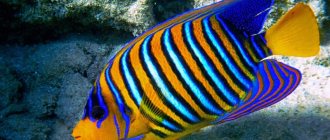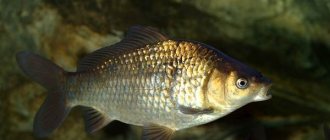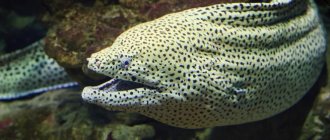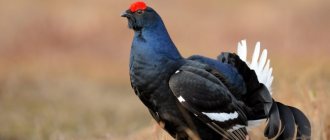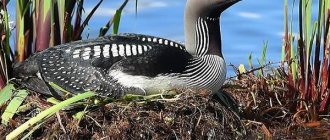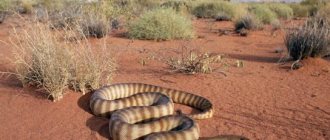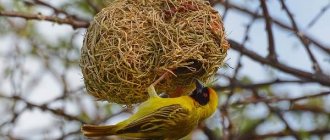red mullet
This fish belongs to the Mullet family. Two species live in the Black Sea. All of them are valuable commercial fish.
As you can see in the photo of the Black Sea fish, the size of the red mullet is small, only 0.4 m. A characteristic difference is its long whiskers, which help stir up sand in search of food.
Crimean oysters
Often in Sochi restaurants you will probably be offered Crimean oysters.
There are several farms in Crimea for their cultivation, including in Sudak, Laspi and Novoozerny. The fashion for oysters came to us from Europe. Oysters are an appetizer. They are usually consumed at the beginning of the meal. Eat fresh (uncooked). Despite the fact that the salinity of the Black Sea is approximately two times lower than in the Atlantic, Crimean oysters have excellent taste. They are less salty, even sweetish, and more tender.
Crimean oysters also differ in their appearance - they are more elongated and flat.
In Sochi there is also a mussel and oyster farm “Courchevel”, located in the village of Golovinka, Lazarevsky district.
Stingrays
The stingray is an elasmobranch cartilaginous fish. On the Black Sea coast you can see two species - the sea fox and the stingray. The characteristic features of the first are tasteless meat, the presence of thorns, and the value of the liver.
The stingray has no spines, only a needle on its tail. Its length is very significant - 0.35 m. The color of this fish is light, closer to white.
Adler trout
Adler trout can be tasted not only in Sochi restaurants. If you visit a factory where this valuable fish is grown, you can catch it yourself and then taste it.
Adler trout is a river fish (let’s not confuse it with sea trout). It turns out very tasty when cooked on the grill (it dries out a little during the cooking process).
Not far from Adler, in the mountains, among the cleanest air on the banks of the Mzymta River, the “royal” trout fish splashes in reservoirs with artesian water. This fish farm has a collection of the most common trout species.
Adler trout is supplied to sanatoriums and restaurants in Adler and Sochi, as well as to many cities in Russia.
Mullet
This is another valuable game fish. There are three species of mullet living in the Black Sea basin:
- Sharp Nose. It has a narrow nose covered with scales.
- Singil. In this fish, the scales originate from the back. The scales on the back have only one tubule.
- Loban. This species has two-channel dorsal plates.
The most common species is the mullet. It got its name from the convex head part. Its size is quite large and it grows quickly.
At the age of 6 years, its length can reach up to 0.6 m and weight up to 2.5 kg. Some fishermen can boast of larger prey, weighing more than 3 kg.
Black Sea garfish
The Black Sea garfish looks very similar to the needle fish. The garfish has a long body and a sharp beak-like nose. There is so much phosphorus in this fish that it glows in the dark, and its bones also glow green.
In Adler there is even a restaurant with the same name, where, in addition to garfish, you will be served red mullet and bluefish, horse mackerel and flounder, katran and trout.
Sargan will be served fried or boiled, but you should keep in mind that this fish from the Black Sea has a specific taste that not everyone likes.
Gurnard
The gurnard is considered the most bizarre Black Sea fish. In appearance it is similar to an exotic butterfly or bird. And all because of the large multi-colored front fins.
Other features:
- massive head;
- narrow forked tail;
- body color – red;
- minimum number of bones;
- high taste of meat.
Even though there is not as much fish in the Black Sea as in other seas, it is quite valuable and worth going fishing. You just need to remember that all sea fish tend to accumulate mercury during their lives, so you don’t need to consume a lot of it.
Effective attachments
Mollusks, crustaceans, small fish, and various worms (sea, earth, dung) are ideal for sea fishing.
The table below shows popular baits for fishing in the Black Sea waters:
| Nozzles | Fish |
| Crab meat | Wrasse, goby, sea ruff |
| Shrimp | European bison, croaker, horse mackerel, weasel |
| Mussel | All marine species except mullet |
| Tilitrids (sea fleas) | Goby, mullet, wrasse |
| Sea worm (nereid, sandworm, etc.) | Zubar, mullet, scorpionfish and other sea fish |
| Animal spleen | Goby, flounder, mullet, sea crucian. |
| Pieces of small fish | Scorpionfish, goby, sea bass, horse mackerel, herring, etc. |
The Black Sea is attractive not only for its resorts and unforgettable views. Experienced fishermen love it for the opportunity to catch a good catch of tasty sea fish. Fishing places can be very diverse: rocks, shore, pier, abandoned creeks and the open sea. There are also no restrictions in the choice of gear and attachments.
Important! Before you start fishing, it is recommended to familiarize yourself with the basic nuances of catching a particular fish.
Photos of Black Sea fish
Length and weight of the Black Sea anchovy depending on age
table 2
| Age, years | Length, mm | Weight, g | ||||
| Average | Minimum | Maximum | average | Minimum | Maximum | |
| 1 | 82 | 55 | 110 | 4,3 | 1,5 | 10,5 |
| 2 | 120 | 108 | 127 | 14,2 | 10,0 | 16,5 |
| 3 | 127 | 124 | 13 | 15,3 | 10,3 | 18,0 |
| 4 | 134 | 129 | 141 | 17,9 | 17,0 | 20,5 |
| 5 | 139 | 134 | 155 | 18,0 | 17,0 | 23,5 |
In summer, a significant part of the anchovy population is distributed in shallow, high-food areas adjacent to the mouths of large rivers (Danube, Dniester, Dnieper) in the northwestern part and in the 5-mile coastal zones of Abkhazia and Georgia, which are also subject to a certain desalination, which contributes to high plankton productivity. In the cold season, anchovy, as a heat-loving species, reduces its distribution area, moving to the Caucasian coast of the Black Sea. It has been established that the most important factors that determine the rate of transition of anchovy from scattered distribution in the surface layer of the sea to wintering aggregations are the level of fat reserves in the body of the fish and the intense autumn decrease in water temperature. After the completion of summer spawning from late August to October, anchovy feeds intensively, which leads to the rapid accumulation of fat, which is an energy reserve for the existence of the fish in the winter.
The first signs of the beginning of the migration of the Black Sea anchovy to the south usually appear in early September, when its catches by coastal fixed seines briefly increase and cases of catching schools with trawls during the Black Sea sprat fishery become more frequent. The autumn movement of anchovy to the southern part of the Black Sea occurs mainly in a rather narrow coastal zone.
Scheme of fishing with a purse seine
The traditional areas for the formation of so-called wintering aggregations of the Black Sea anchovy are the coastal regions of Turkey from Sinop to Rize and the water area adjacent to the Georgian and Abkhaz coasts from Batumi to Sukhumi. It is in these areas of the sea, mainly at a distance of 1-3 miles from the coast, that active fishing for anchovy with purse seines occurs.
Observations have shown that the timing of the formation of dense schools suitable for fishing depends on the fat content in the body of the anchovy and the cooling of the surface of the water basin in the fishing zone.
As a rule, large individuals of 2-3 years of age have a higher fat content, which most often form the first commercial aggregations in late November - early December. Numerous juveniles of the Black Sea anchovy approach the shore and form schools at a later date - usually from mid-December to mid-January.
The winter period of the anchovy's life cycle is characterized by daily vertical diurnal patterns, which significantly influence the course of the fishery. At the beginning of winter, when the upper 40-meter layer of water remains 2-40 warmer than the underlying waters, schools of anchovy are distributed closer to the sea surface. However, in the daytime, anchovy is observed to lower by 20-30 m from the surface, which apparently reduces the possibility of the fish being eaten by aquatic predators, including birds. In general, until mid-January, anchovy remains well accessible for fishing with purse seines, which are capable of catching fish to a depth of 50-60 m. Subsequently, under the influence of intense winter storms and cold westerly currents, cooling to 8-90 and mixing of waters occurs throughout the entire 100-150-meter thickness. These conditions contribute to an increase in the length of daily vertical migrations. During the day, anchovy can descend to a depth of up to 120 m. Moreover, in especially cold winters, characterized by continuous storms, snowfalls and a drop in water temperature to 6.5-7.00 C, anchovy stops rising to the surface horizons of the sea and lies in the bottom layer. At the same time, fish mortality increases sharply.
Throughout the fishing season, the highest catches of seiners - up to 30-60 tons per seine sweep - occur in the evening and morning hours, when the density of schools at the sea surface is 200-400 specimens/m3. In the middle of the night, the concentration density decreases to 20-60 individuals/m3, which makes replacements less effective. Daytime concentrations, although characterized by the highest density - up to 500-800 specimens/m3, are rarely caught due to their deep occurrence. The disintegration of schools and the return spring migration occurs in late March - April.
When analyzing the long-term dynamics of the Black Sea anchovy population, it should be taken into account that since the beginning of the 70s, when the number of large pelagic predators in the sea sharply decreased - mackerel, bonito, large mackerel, etc. (apparently due to the deterioration of the environmental situation), stocks small short-cycle fish have practically remained only under the influence of fishing.
Accordingly, until the end of the 80s, while the number of fishing vessels (primarily Turkey) was increasing, the reserves of the Black Sea anchovy were relatively stable, and catches were gradually increasing. During this period, commercial harvest was close to optimal, amounting to about 45-50% of the commercial stock. Together with the natural decline, which mainly took place in winter, the total annual mortality, on average, was about 86% of the maximum autumn stock level.
The power (productivity) of anchovy generations, which determined the level of the commercial stock, depended primarily on the size of the parent herd. Moreover. With an excessive increase in the number of spawning fish of two to three years of age, the yield dropped sharply, which, apparently, was ensured by intrapopulation regulatory mechanisms (competition for food, cannibalism, etc.). However, in 1984, the annual catch of Black Sea anchovy by the main fishing countries of the USSR and Turkey exceeded 500 thousand tons, which corresponded to the removal of more than 60% of the total stock. Subsequently, a decline followed, both in the number of anchovy and in fishing conditions. Only in 1987, when the next large generation appeared, the state of the Black Sea anchovy resources improved. But it increased sharply again in 1988. The “press” of fishing led to another decline in the herd size.
